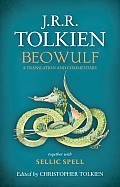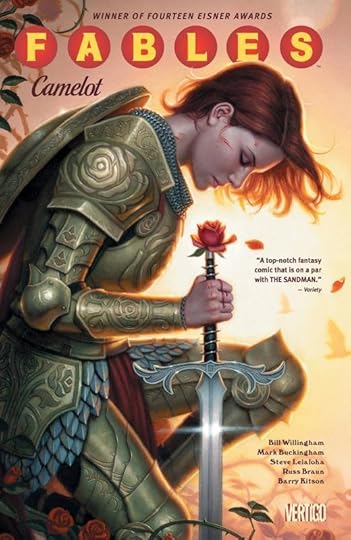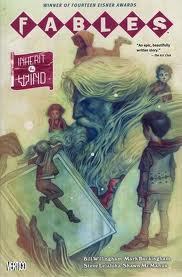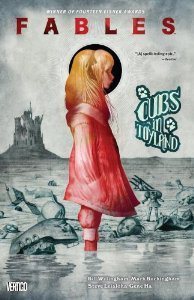Alex C. Telander's Blog, page 36
January 13, 2015
Book News: Top Books of 2014, Anticipated 2015 Titles, Greatest Libraries & More!
Abnormal Bookstore Activities
Looking for some real fun to get up to in a bookstore?
Orbital The Martian Script��
In what has to be a first, the script for the movie adaptation of the book The Martian has been launched into space.
Bookish PJs��
You know you do all your good reading at night, and now you can look fashionable while you do it.
[read more . . .]

January 9, 2015
���Lock in��� by John Scalzi (Tor, 2014)
John Scalzi���s latest book, Lock in, is one of those works of science fiction that just seems like a cool story at first, but then as the reader thinks more on it, realizes there���s a lot more going on that says something about our world today and where it���s possibly headed.
It is the near future and a highly contagious virus has swept across the globe. For most of the world population, it is nothing worse than a heavy case of the flu, but for the unlucky one percent, it causes a condition known as ���lock in��� or ���Haden���s syndrome��� where victims are fully awake and aware but their bodies are completely paralyzed. But there are ���threeps,��� mechanical human-looking bodies that these victim���s consciousnesses can be downloaded into and used. Then there are ���integrators,��� special people who after suffering from the virus who have the ability to have someone���s consciousness downloaded into their minds and have their bodies taken over for a limited time.
The story focuses on rookie FBI agent Chris Shane on his first case with tough partner Leslie Vann, investigating a Haden-related murder at the Watergate Hotel. The victim is also an Integrator which complicates things greatly. In a world where everyone has an opinion about Haden victims and they are about to lose some significant government funding, Shane finds himself involved in a seminal case that will have a great influence on how Haden victims will be seen and viewed by everyone.
Lock in is just good science fiction, with a diverse cast of men and women who feel real, living in a very real world. It forces the reader to question their thoughts and feelings on anyone with a disability. Scalzi poses perhaps the most important thought in the book when there are those looking to ���cure��� Haden���s syndrome, while Haden victims just want to be accepted into society as fellow people. Science fiction is supposed to make you think and question the status quo and Lock in does this very well.
Originally written on September 19, 2014 ��Alex C. Telander.
To purchase a copy of Lock in from Bookshop Santa Cruz, and help support BookBanter, click HERE.

January 7, 2015
Forces of Geek Best of 2014
ALEX C. TELANDER
@bookbanter ��� Bookbanter
Best TV Shows: Orange is the New Black, Orphan Black, Key & Peele, Brooklyn Nine Nine
Best Books (fiction): The Slow Regard of Silent Things by Patrick Rothfuss, Pines by Blake Crouch, S. by J. J. Abrams, The Martian by Andy Weir
Best Books (non-fiction): The Sixth Extinction by Elizabeth Kolbert
Best Albums: ‘The Endless River’ by Pink Floyd
Best Comic Books / Graphic Novels: Saga Volume 3 by Brian K. Vaughan, The Wake by Scott Snyder, In Real Life by Cory Doctorow
Alex C. Telander writes the column, Book Report, for Forces of Geek.
For more best of lists, follow this link . . .

January 1, 2015
Bookbanter 2014 in review
The WordPress.com stats helper monkeys prepared a 2014 annual report for this blog.
Here’s an excerpt:
The concert hall at the Sydney Opera House holds 2,700 people. This blog was viewed about 15,000 times in 2014. If it were a concert at Sydney Opera House, it would take about 6 sold-out performances for that many people to see it.
Click here to see the complete report.

December 30, 2014
“Beowulf: A Translation and Commentary” by J. R. R. Tolkien, edited by Christopher Tolkien (Houghton Mifflin Harcourt, 2014)
In addition to creating the first fantasy epic, inventing a complete and insanely, thoroughly detailed world, and even making up its own language and alphabet, as well as teaching for decades, the great J. R. R. Tolkien also wrote a translation to the famous epic Old English poem “Beowulf.” Beowulf: A Translation and Commentary edited by his son, Christopher Tolkien, reveals this translation in its entirety for the first time, and so much more.
Tolkien completed his first translation of “Beowulf” in 1926, but he was by no means done with the poem. Over the ensuing years and decades he continued to make changes and updates and lectured greatly on the epic alliterative poem. Christopher Tolkien presents this ideal translation from Tolkien, and then includes his father’s vast commentary painstakingly collected and organized. The book features notes on how Tolkien translated specific words and stanzas with plenty of additional notes. Included are also lectures and lecture notes Tolkien gave on the epic poem. Finally, the great author even penned his own poem (in both modern and Old English) that acts as a precursor to “Beowulf” as a sort of fairytale written in the same style, but not within the history.
Compared to Seamus Heaney’s very well known and popular translation of the same poem, Tolkien goes for a much more literal adaptation, where some of the moving alliteration is perhaps lost, but the true sense of the poem and the meaning the author or authors were intending is possibly better comprehended. With the description and vocabulary, Tolkien does a great job of making the reader feel as if they are there at Heorot with Beowulf and Hrothgar and the comitatus. He uses an older language of “doths” and “thines” because of the time he is writing in, but also to give a sense of age to the poem, which can be a helping or a hindrance for the reader. Nevertheless, Tolkien’s translation of Beowulf is a very welcome one that will be enjoyed by many and likely taught and studied in future medieval and Old English classes to come.
Originally written on November 18, 2014 ��Alex C. Telander.
To purchase a copy of Beowulf: A Translation and Commentary from Bookshop Santa Cruz, and help support BookBanter, click HERE.
You might also like . . .

December 23, 2014
Book News: Finding Extra Reading Time, Five 2014 Novels You Shouldn’t Miss, American Reading Habits and More!
��
Still looking for that last ornament to grace your Christmas Tree, check out this book-related works of ornamental art.
Bookish Holiday Socks��
Looking for that last minute stocking stuffer? Check out these bookish socks.
Holiday Reading��
An interesting article on how to maximize your reading time during the holidays.
[read more . . .]

December 19, 2014
Guest Post: A Timeline of the Great Undead War

After a surprise attack on London and New York, the Germans introduced a new type of gas���corpse gas���a revolutionary weapon that resurrected the bodies of the dead.
For those who survived the killing fields of France, the danger has only just begun. Veteran Major Michael ���Madman��� Burke and his company have just been assigned a daring new mission by the president himself: rescue the members of the British royal family. But Manfred von Richthofen, the undead Red Baron and newly self-appointed leader of Germany, is also determined to find the family.
In the devastated, zombie-infested city of London, Burke and his men will face off in an unholy battle with their most formidable opponent yet: a team of infected super soldiers���shredders���who have greater speed and strength than their shambler predecessors. If they don���t succeed, all of Britain will fall into undead enemy hands.
A TIMELINE OF THE GREAT UNDEAD WAR
��
��June 1914
Assassination of Archduke Franz Ferdinand of Austria at the hands of a Serbian national.
July 1914
Austria declares war on Serbia.
August 1914
Germany declares war on Russia, then France. German troops pour into Belgium. Britain declares war on Germany. Russians defeated at Tannenburg.
October 1914
Turkey declares neutrality and refuses to enter the war while Japan enters the war on the side of its British allies.
November 1914
Germans stopped at the Marne. Stalemate settles into the Western Front. Hopes that the war will be over by Christmas quickly fade.
December 1914
Germans use zeppelins to begin bombing Great Britain.
April 1915
Second battle of Ypres. Poison gas used for the first time in the war.
May 1915
Lusitania sunk. America contemplates joining the war.
June 1916
First large���scale naval engagement at Jutland. British losses are heavy, but Germany withdraws.
February ��� November 1916
Battle of Verdun. Inconclusive result after nine months of fighting and nearly 1 million casualties.
July ��� November 1916
Battle of the Somme. Allies win thin stretch of ground (25 miles) at a cost of 920,000 casualties.
April 1917
America declares war on Germany. American Expeditionary Force sent to Europe to stop the German advance.
��
July ��� November 1917
Third Battle of Ypres. Germans deploy T-Lieche – corpse gas – for the first time.
January 1918
Allied forces face shambler brigades for the first time at the Second Battle of the Marne. Allies quickly routed as corpse gas bombardment brings their own casualties back to life to fight against them.
March 1918
First American aero squadron, the 94th, activated at Villeneuve. Eddie Rickenbacker in command.
April 1918
Manfred von Richthofen, the Red Baron, shot down by Allied forces but rises anew as a revenant. Takes command of the Flying Circus.
May 1918 ��� November 1919
Allied forces lose ground in the face of repeated German assaults. Retreat to within a few dozen miles of Paris.
December 1919
President Harper gives his now���famous ���World Belongs to the Living��� speech. Allies rally in Europe while the Kaiser is occupied with the East.
April 1920
First use of tanks in support of infantry at the Battle of Cambrai. British troops roll over German machine gun positions.
June 1920
Champagne Offensive begins. Allies push Germans back to the Somme, but just barely. Richthofen shot down for a second time, walks away from the wreckage unscathed.
October 1920
Under Richthofen���s orders, Dr. Eisenberg begins the Geheime Volks project, attempting to create a legion of undead supersoldiers with a unique blend of alchemy, science, and occult arts.
March 1921
American ace Jack Freeman ��� illegitimate son of President Harper ��� shot down and captured by the enemy. Captain Michael ���Madman��� Burke and his Marauders ordered to rescue him from behind enemy lines.
Geheime Volks put into mass production.
April 1921
London and New York rendered uninhabitable when the Germans successfully release a new strain of corpse gas over each city, turning the living into zombie-like creatures with a taste for human flesh. These new creatures are quickly nicknamed Shredders for the speed and savagery of their attacks.
On Her Majesty���s Behalf begins…

Joseph Nassise is the New York Times and USA Today bestselling author of more than twenty novels, including the internationally bestselling Templar Chronicles series, the Jeremiah Hunt series, and several books in the Rogue Angel action/adventure series from Gold Eagle. He’s a former president of the Horror Writers Association, the world’s largest organization of professional horror writers, and a multiple Bram Stoker Award and International Horror Guild Award nominee.

December 17, 2014
Book News: Stephen King Primer, Rowling’s BBC Series, Must Read Indies & More!
Cormoran Strike
J. K. Rowling’s Cormoran Strike mystery novels, penned under the pseudonym Robert Galbraith, are set to become a BBC TV series.
Ferguson Library��
How you can help support and help the library in Ferguson.
Bookish Instagram��
A roundup of the best book-related instagrams.
[read more . . .]

December 12, 2014
Forces of Geek Gift Guide
December 10, 2014
“Fables Volume 20: Camelot” by Bill Willingham and Mark Buckingham (Vertigo, 2014)
To say that the comic book series penned by Bill Willingham and illustrated by Mark Buckingham has reached its twentieth collected volume is quite the astonishing feat, but when one considers that it has won fourteen Eisner awards, and is working its way through its second major storyline that continues to build and become more exiting with each volume, it’s not really a surprise at all.
After things continue to take a turn for the worse in the previous collected volume, Snow White, Camelot seeks to create a new hero to try to turn things around with Snow White’s sister, Rose Red. She takes on the role that she feels destined for, the Paladin of Hope, and what better way to do this than with a new Camelot and some brave Knights of the Round Table. One might also call them the Knights of Second Chances, as Rose Red is willing to wipe the slate clean if they prove themselves.
They travel from all the lands, creatures great and small, humans mighty and miniature, but only the bravest and true will succeed and be selected. Red even offers an old enemy a second chance, which sets her at odds against her sister. Snow White refuses to see her sister from now on, keeping what’s left of her family away from her also, feeling betrayal will inevitably come.
Meanwhile the witches and wizards of Fabletown are trying their darnedest to reassemble the glass shards of Bigby Wolf so he can be whole and alive once more. Side stories in Camelot include that of Bigby and Boy Blue in a sort of afterlife, as well as what Gepetto and Junebug are currently up to, and finally the Boy Blue Band go on an adventure into the Homelands.
For a special twentieth volume, Camelot is a nice long read, with a great main story that is ratcheting up the suspense with what is going to happen next, along with some great side stories. It shows that Willingham has so many stories to tell that the reader never knows what’s going to happen or who’s going to appear on the next page. Fables Volume 20 is a worthy addition to the collection that will be a delight to fans everywhere.
Originally written on November 18, 2014 ��Alex C. Telander.
To purchase a copy of Fables Volume 20: Camelot from Bookshop Santa Cruz, and help support BookBanter, click HERE.
You might also like . . .























